
Checkpoint Bravo, Berlin
The Berlin Wall was 140 kilometres long. In June 1962, a second, parallel fence was built some 100 metres farther into East German territory. The houses contained between the fences were razed and the inhabitants relocated. It became known as the "Death Strip". The Death Strip was covered with raked sand or gravel, rendering footprints easy to notice, easing the detection of trespassers and also enabling officers to see which guards had neglected their task; it offered no cover; and, most importantly, it offered clear fields of fire for the wall guards.
<

Checkpoint Bravo, Berlin
The Berlin Wall was 140 kilometres long. In June 1962, a second, parallel fence was built some 100 metres farther into East German territory. The houses contained between the fences were razed and the inhabitants relocated. It became known as the "Death Strip". The Death Strip was covered with raked sand or gravel, rendering footprints easy to notice, easing the detection of trespassers and also enabling officers to see which guards had neglected their task; it offered no cover; and, most importantly, it offered clear fields of fire for the wall guards.

Café Moskau, Berlin

Die Urania-Weltzeituhr, am Alexanderplatz, Berlin
Inaugured the 30 september 1969 to celebrate the 20 years birthday of GDR. This monument was, and are still a famous meeting point for berlin's peoples. In 1989, during the "Peacefull revolution", a lot of massive protest and manifestations against the political system of the GDR start from this clock, before to reach the Palast der Republik and the Gethsemanekirche.

Café Moskau, Berlin

No man's land in Dreilingen
The Berlin Wall was 140 kilometres long. In June 1962, a second, parallel fence was built some 100 metres farther into East German territory. The houses contained between the fences were razed and the inhabitants relocated. It became known as the "Death Strip". The Death Strip was covered with raked sand or gravel, rendering footprints easy to notice, easing the detection of trespassers and also enabling officers to see which guards had neglected their task; it offered no cover; and, most importantly, it offered clear fields of fire for the wall guards.

Friedhofsbahn

Bundesautobahn 115
A115 was opened in 1921 as Germany's first limited access road. After the World War 2, it served an important function as a transit road between West Berlin and West Germany. In 1969, a small part of the highway was moved eastwards by GDR authorities so that the Checkpoint Bravo would be fully on West Berlin territory. Previously, one would enter East German territory again briefly after passing the border check into West Berlin, which posed some problems for the East German regime. This portion of the highway is since this time abandonned. Today, there is not so much to see about this part of road.

Checkpoint Bravo, Berlin
Checkpoint Bravo ("Checkpoint B") was the name given by the Western Allies to the main autobahn border crossing points between West Berlin and the German Democratic Republic. The Americans established the Allied checkpoint Bravo on a bridge, directly on the highway. Till 1969, 5.9 millions persons and approx. 2.5 millions motor vehicles crossed this border. The checkpoint was moved during 1969 from Drewitz to Nikolassee. The East German authorities realigned the transit route to eliminate a brief re-entry into GDR territory. Today, the buildigs are use by the costums. The vast site of the East-German checkpoint was converted into a commercial park named Europarc Dreilinden. All that remains of the checkpoint is the former main control tower.

ZEKIWA: Kinderwagen-Hersteller / baby carriage manufacturer, Zeitz
Zekiwa was created in 1846. At times of GDR the factory produced for the whole RGW (Council for mutual economic aid, an international organization of the socialist governments under guidance of the Soviet Union at the moment of the cold war), but also for West German enterprises, and exported to 17 countries. It became the biggest baby carriage factory of Europe. In the best time it was manufactured annually 450.000 baby carriages and 160.000 doll's strollers. 2200 peoples was worked there. After the political turn in 1989, ZEKIWA developed itself into a dynamic medium-size enterprise and was privatized in 1993. The production was moved from Zeitz to Döschwitz. A museum in the city castle, and the empty buidings are the only rest of this production in Zeitz.

Brühl, Zeitz

Villa Weltfrieden, Zeitz
The villa Steineck (know as well as Villa Weltfrieden = world peace) was built in 1900 by Richard Naether, founder's son of the VEB ZEKIWA. The family Naether lived in the villa up to 1946. From this year till the reunification the villa became a Haus des Volkes (People's house). It was the headquarter of FDJ and many associations, dance groups, restaurant. A lot of events took place there. Zeitzer were used to coming to walk in the park. After the fall of the wall, the house becomes again the property of the family Naether, in 1993. During approximately three years the family undertook big efforts to animate the old house again. The attempts failed and the property was sold but never maintained.

Zeiss-Großplanetarium, Berlin
The Zeiss-Großplanetarium was opened in 1987 as one of the biggest and most modern star theaters at this time. Since april 2014 the planetarium is closed for renovation and modernization. The reopening is planned for the beginning of 2016.

ERNST THÄLMANN PARK, Berlin
Ernst-Thälmann-Park is a park in the centre of the Prenzlauer Berg district in Berlin. For the 750 years jubilee of Berlin, the East German government set up plans for an "inhabited park", including a memorial, a public pool, a planetarium, a school and a housing estate for 4,000 residents. The park was inaugurated on 16 April 1986, Thälmann's hundredth birthday. After the reunification, there had been some discussion about the name, a majority of dwellers voted against a change in 1997. Today the park features public houses as well as art galleries and a small theatre.

ERNST THÄLMANN PARK, Berlin
Ernst-Thälmann-Park is a park in the centre of the Prenzlauer Berg district in Berlin. For the 750 years jubilee of Berlin, the East German government set up plans for an "inhabited park", including a memorial, a public pool, a planetarium, a school and a housing estate for 4,000 residents. The park was inaugurated on 16 April 1986, Thälmann's hundredth birthday. After the reunification, there had been some discussion about the name, a majority of dwellers voted against a change in 1997. Today the park features public houses as well as art galleries and a small theatre.

STASI ARCHIVES, Berlin
The Ministry for State Security (German: Ministerium für Staatssicherheit, MfS), commonly known as the Stasi, was the official state security service of the German Democratic Republic. It has been described as one of the most effective and repressive intelligence and secret police agencies to have existed. The Stasi was headquartered in East Berlin, with an extensive complex in Berlin-Lichtenberg and several smaller facilities throughout the city.

EISENHÜTTENSTADT, Germany
Eisenhüttenstadt (literally "ironworks city" in German) is a town in the Oder-Spree district of the state of Brandenburg, Germany, at the border with Poland. Eisenhuttenstadt was founded as a consequence of the Cold War in Germany and Europe. With the division of germany the common economic area of the former German Reich was also torn apart. When GDR was found in 1949 based on the Soviet model, heavy industry was the first priority to be built up. Work on the Eisenhüttenkombinat Ost (Ironworks Combine East) commenced in 1950 near Fürstenberg an der Oder, and soon a new residential town for the workers began being constructed there: Eisenhüttenstadt.

EISENHÜTTENSTADT,"Hotel Lunik", Germany
Eisenhüttenstadt (literally "ironworks city" in German) is a town in the Oder-Spree district of the state of Brandenburg, Germany, at the border with Poland. Eisenhuttenstadt was founded as a consequence of the Cold War in Germany and Europe. With the division of germany the common economic area of the former German Reich was also torn apart. When GDR was found in 1949 based on the Soviet model, heavy industry was the first priority to be built up. Work on the Eisenhüttenkombinat Ost (Ironworks Combine East) commenced in 1950 near Fürstenberg an der Oder, and soon a new residential town for the workers began being constructed there: Eisenhüttenstadt.

EISENHÜTTENSTADT, Germany
Eisenhüttenstadt (literally "ironworks city" in German) is a town in the Oder-Spree district of the state of Brandenburg, Germany, at the border with Poland. Eisenhuttenstadt was founded as a consequence of the Cold War in Germany and Europe. With the division of germany the common economic area of the former German Reich was also torn apart. When GDR was found in 1949 based on the Soviet model, heavy industry was the first priority to be built up. Work on the Eisenhüttenkombinat Ost (Ironworks Combine East) commenced in 1950 near Fürstenberg an der Oder, and soon a new residential town for the workers began being constructed there: Eisenhüttenstadt.

EISENHÜTTENSTADT, Germany
Eisenhüttenstadt (literally "ironworks city" in German) is a town in the Oder-Spree district of the state of Brandenburg, Germany, at the border with Poland. Eisenhuttenstadt was founded as a consequence of the Cold War in Germany and Europe. With the division of germany the common economic area of the former German Reich was also torn apart. When GDR was found in 1949 based on the Soviet model, heavy industry was the first priority to be built up. Work on the Eisenhüttenkombinat Ost (Ironworks Combine East) commenced in 1950 near Fürstenberg an der Oder, and soon a new residential town for the workers began being constructed there: Eisenhüttenstadt.

DDR Flat
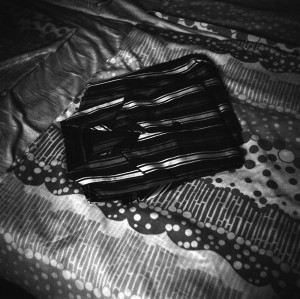
DDR Flat

STASI JAIL, Postdam
This prison complex in the city of Potsdam near Berlin was used first by the Nazis, then the Soviet KGB, and finally the Stasi, the secret security police of the GDR. During the initial post-war years , during the Soviet occupation, the KGB used this prison as one of the many sites where were imprisoned and tortured Germans accused of being Nazi.In 1952, the prison was handed over to the Stasi. Henceforth it was a remand prison for political opponents of the regime.
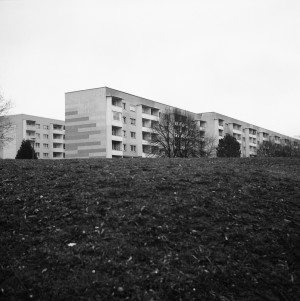
PLATTENBAU, Weisenfels, Germany

PALAST OF TEARS, Berlin
he "Palace of Tears" (german: Tränenpalast) is a former border crossing at Berlin Friedrichstraße station, where East Germans said goodbye to visitors going back to West Germany. From 1962 to 1989 it was the border crossing for travellers by S-bahn, U-bahn and train between East and West Germany. It was used only for westbound border crossings, with separate checkpoints for West Berliners, West Germans, foreigners, diplomats, transit travellers and East Germans. The term Tränenpalast derives from the tearful goodbyes that took place in front of the building, where western visitors had to say farewell to East Germans that were not permitted to travel to West Berlin.

PLATTENBAU, Zeitz

SOVIET MEMORIAL, Zeitz
Built in 1046, the russian war cemetery Michendorfer Chaussee is the biggest soviet graveyard in the east german territory. This war cemetery contains the graves of 2,398 Soviet soldiers and officers who fell in the fighting for Potsdam in April 1945 or died due to their wounds thereafter. There are also 2,829 post-war graves.
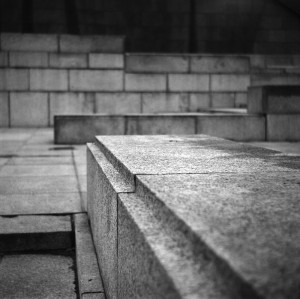
SOVIET WAR MEMORIAL, Treptower Park, Berlin
This vast memorial and military cemetery commemorate 5,000 of the 80,000 Soviet soldiers who fell in the Battle of Berlin. It served as the central war memorial of East Germany. It was built to the design of the Soviet architect Yakov Belopolsky and opened four years after World War II on May 8,1949.

SOVIET WAR MEMORIAL, Pankow, Berlin
his Memorial was erected in Pankow in the period between May 1947 and November 1949 and covers an area of 30 000 m². The memorial contains the biggest Soviet cemetery in Berlin, which is also the biggest Russian cemetery in Europe outside of Russia, where 13,200 Soviet soldiers that had fallen during the battle of Berlin, should be buried.

MARIENFELDE REFUGEE CENTER, Berlin
Marienfelde refugee transit camp was one of three camps operated by West Germany and West Berlin during the cold war for dealing with the great waves of immigration from East Germany. Between 1949 and 1990, around 4 million people left East Germany for the West. The were fleeing the political pressures, personal persecution and economic harassment. Refugees arriving in West Berlin were sent to the reception centre located in the Marienfelde district, where they received medical treatment, food, identification papers, and housing until they could be permanently re-settled in the West. 1,35 millions people had passed through this "gate of freedom". December 2010 the former refugee center was reactivated and is now a residential home for asylum-seekers.
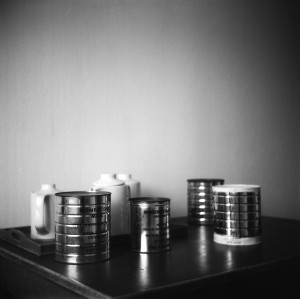
MARIENFELDE REFUGEE CENTER, Berlin
Marienfelde refugee transit camp was one of three camps operated by West Germany and West Berlin during the cold war for dealing with the great waves of immigration from East Germany. Between 1949 and 1990, around 4 million people left East Germany for the West. The were fleeing the political pressures, personal persecution and economic harassment. Refugees arriving in West Berlin were sent to the reception centre located in the Marienfelde district, where they received medical treatment, food, identification papers, and housing until they could be permanently re-settled in the West. 1,35 millions people had passed through this "gate of freedom". December 2010 the former refugee center was reactivated and is now a residential home for asylum-seekers.

SOVIET WAR MEMORIAL, Pankow, Berlin
This memorial was erected in Pankow in the period between May 1947 and November 1949 and covers an area of 30 000 m². The memorial contains the biggest Soviet cemetery in Berlin, which is also the biggest Russian cemetery in Europe outside of Russia, where 13,200 Soviet soldiers that had fallen during the battle of Berlin, should be buried.

MARIENFELDE REFUGEE CENTER, Berlin
Marienfelde refugee transit camp was one of three camps operated by West Germany and West Berlin during the cold war for dealing with the great waves of immigration from East Germany. Between 1949 and 1990, around 4 million people left East Germany for the West. The were fleeing the political pressures, personal persecution and economic harassment. Refugees arriving in West Berlin were sent to the reception centre located in the Marienfelde district, where they received medical treatment, food, identification papers, and housing until they could be permanently re-settled in the West. 1,35 millions people had passed through this "gate of freedom". December 2010 the former refugee center was reactivated and is now a residential home for asylum-seekers.

MICHENDORFER CHAUSSEE CEMETERY, Postdam
Built in 1046, the russian war cemetery Michendorfer Chaussee is the biggest soviet graveyard in the east german territory. This war cemetery contains the graves of 2,398 Soviet soldiers and officers who fell in the fighting for Potsdam in April 1945 or died due to their wounds thereafter. There are also 2,829 post-war graves.

MICHENDORFER CHAUSSEE CEMETERY, Postdam
Built in 1046, the russian war cemetery Michendorfer Chaussee is the biggest soviet graveyard in the east german territory. This war cemetery contains the graves of 2,398 Soviet soldiers and officers who fell in the fighting for Potsdam in April 1945 or died due to their wounds thereafter. There are also 2,829 post-war graves.

MICHENDORFER CHAUSSEE CEMETERY, Postdam
Built in 1046, the russian war cemetery Michendorfer Chaussee is the biggest soviet graveyard in the east german territory. This war cemetery contains the graves of 2,398 Soviet soldiers and officers who fell in the fighting for Potsdam in April 1945 or died due to their wounds thereafter. There are also 2,829 post-war graves.

MICHENDORFER CHAUSSEE CEMETERY, Postdam
Built in 1046, the russian war cemetery Michendorfer Chaussee is the biggest soviet graveyard in the east german territory. This war cemetery contains the graves of 2,398 Soviet soldiers and officers who fell in the fighting for Potsdam in April 1945 or died due to their wounds thereafter. There are also 2,829 post-war graves.

MICHENDORFER CHAUSSEE CEMETERY, Postdam
Built in 1046, the russian war cemetery Michendorfer Chaussee is the biggest soviet graveyard in the east german territory. This war cemetery contains the graves of 2,398 Soviet soldiers and officers who fell in the fighting for Potsdam in April 1945 or died due to their wounds thereafter. There are also 2,829 post-war graves.

STASI JAIL, Hohenschönhausen, Berlin
The Soviets took over a former canteen block in the north-east of Berlin at the end of the Second World War and turned it into a special detainment camp. After the camp was closed in October 1946, the cellar was converted into the main Soviet Secret Police prison for detention and interrogation in East Germany. In 1951 the East German Ministry of State Security (Stasi) took over the prison, added a new prison building in 1961, included 200 prison cells and interrogation rooms, and, until 1989, used the site as its main remand centre.

Sporthotel Hohenschönhausen, Berlin

STASI JAIL, Hohenschönhausen, Berlin
The Soviets took over a former canteen block in the north-east of Berlin at the end of the Second World War and turned it into a special detainment camp. After the camp was closed in October 1946, the cellar was converted into the main Soviet Secret Police prison for detention and interrogation in East Germany. In 1951 the East German Ministry of State Security (Stasi) took over the prison, added a new prison building in 1961, included 200 prison cells and interrogation rooms, and, until 1989, used the site as its main remand centre.

STASI JAIL, Hohenschönhausen, Berlin
The Soviets took over a former canteen block in the north-east of Berlin at the end of the Second World War and turned it into a special detainment camp. After the camp was closed in October 1946, the cellar was converted into the main Soviet Secret Police prison for detention and interrogation in East Germany. In 1951 the East German Ministry of State Security (Stasi) took over the prison, added a new prison building in 1961, included 200 prison cells and interrogation rooms, and, until 1989, used the site as its main remand centre.

STASI JAIL, Hohenschönhausen, Berlin
The Soviets took over a former canteen block in the north-east of Berlin at the end of the Second World War and turned it into a special detainment camp. After the camp was closed in October 1946, the cellar was converted into the main Soviet Secret Police prison for detention and interrogation in East Germany. In 1951 the East German Ministry of State Security (Stasi) took over the prison, added a new prison building in 1961, included 200 prison cells and interrogation rooms, and, until 1989, used the site as its main remand centre.

STASI JAIL, Hohenschönhausen, Berlin
The Soviets took over a former canteen block in the north-east of Berlin at the end of the Second World War and turned it into a special detainment camp. After the camp was closed in October 1946, the cellar was converted into the main Soviet Secret Police prison for detention and interrogation in East Germany. In 1951 the East German Ministry of State Security (Stasi) took over the prison, added a new prison building in 1961, included 200 prison cells and interrogation rooms, and, until 1989, used the site as its main remand centre.
Delivery vans and minibus named B1000
Stasi used it a sa covert prisoner transport vehicle, whereby up to 5 prisoners could be held in tiny, windowless cells. the vans were often used to snatch citizens directly from the street, and were usually disguised as food delivery trucks.

STASI JAIL, Hohenschönhausen, Berlin
The Soviets took over a former canteen block in the north-east of Berlin at the end of the Second World War and turned it into a special detainment camp. After the camp was closed in October 1946, the cellar was converted into the main Soviet Secret Police prison for detention and interrogation in East Germany. In 1951 the East German Ministry of State Security (Stasi) took over the prison, added a new prison building in 1961, included 200 prison cells and interrogation rooms, and, until 1989, used the site as its main remand centre.

HAUS DER STATISTIK, Berlin

GLIENICKE BRIDGE, Postdam
The Glienicke Bridge is a bridge across the Havel River in Germany, connecting the Wannsee district of Berlin with the Brandenburg capital Potsdam. The steel bridge was reopened in December 1949 as the “Bridge of Unity”. The border between the Federal Republic of Germany and the German Democratic Republic ran through the middle of the bridge. On May 1952, East German authorities closed the bridge to citizens of West Berlin and West Germany. In august 1961, after the construction of the Berlin Wall, the bridge was closed to East German citizens too. Only allied personnel were allowed to access the bridge. It was one of the few places in the world where the United States and the Soviet Union stood directly opposite to each other. This bridge have been use by Americans and Soviets for the exchange of captured spies during the Cold War. Reporters began calling it the "Bridge of Spies".

MAUERWEG, Berlin
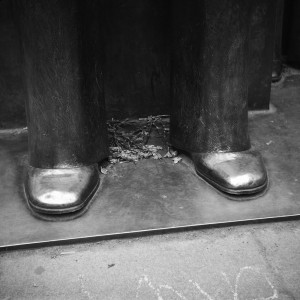
MARX AND ENGELS, Berlin
Before World War II, the area was a densely populated Old Town quarter between the river and Alexanderplatz. The area was heavily bombed during Allied air attacks in 1944/45 and most of its buildings reduced to ruins. The GDR authorities in 1977 set up plans for a green space between the Palast der Republik and the Fernsehturm. The sculptor Ludwig Engelhardt was appointed as director of the project to redevelop the site as a tribute to Marx and Engels, the founders of the communist movement to whose ideology the GDR was dedicated. The inauguration took place in 1986. After German reunification in 1990, the future of the Marx-Engels Forum became the subject of public controversy. Some Berliners saw the Forum as an unwanted relic of a defunct regime which they opposed, and argued for the removal of the statues and renaming of the park. Others argued that the site had both artistic and historical significance, and should be preserved. The latter view eventually prevailed.
>